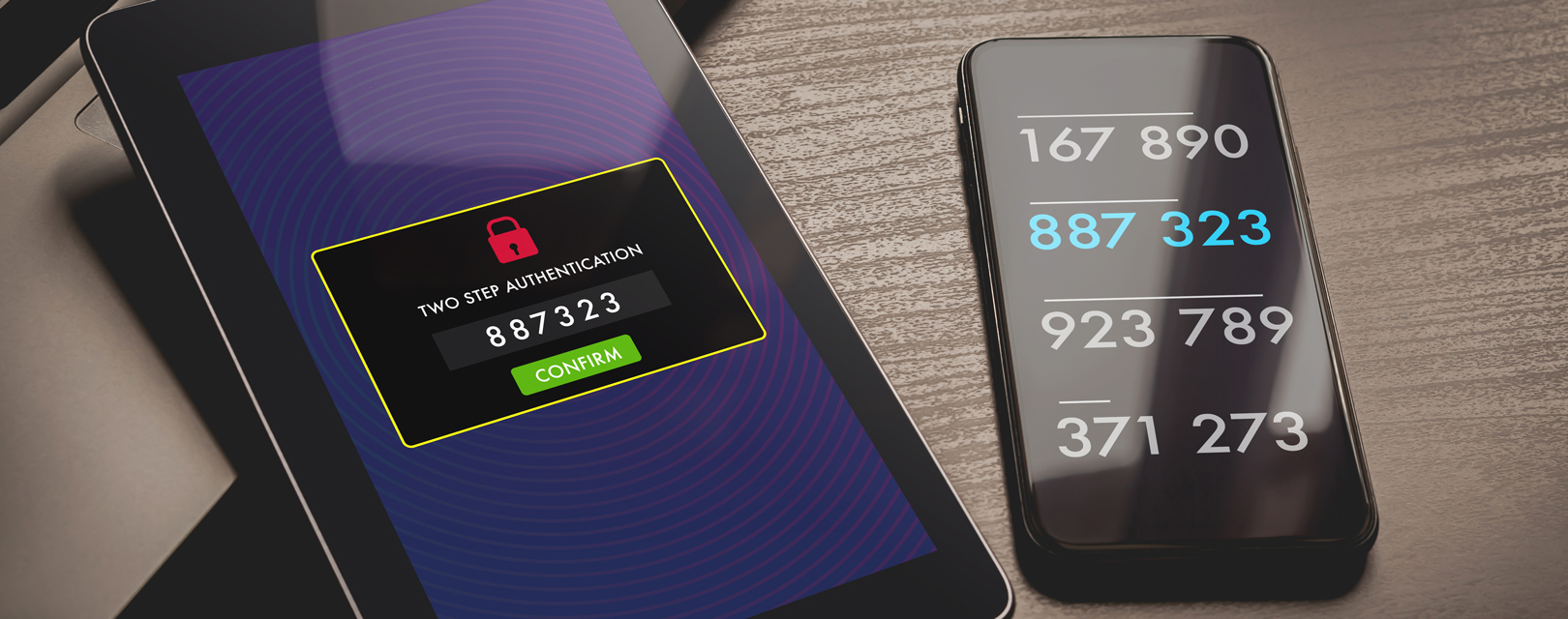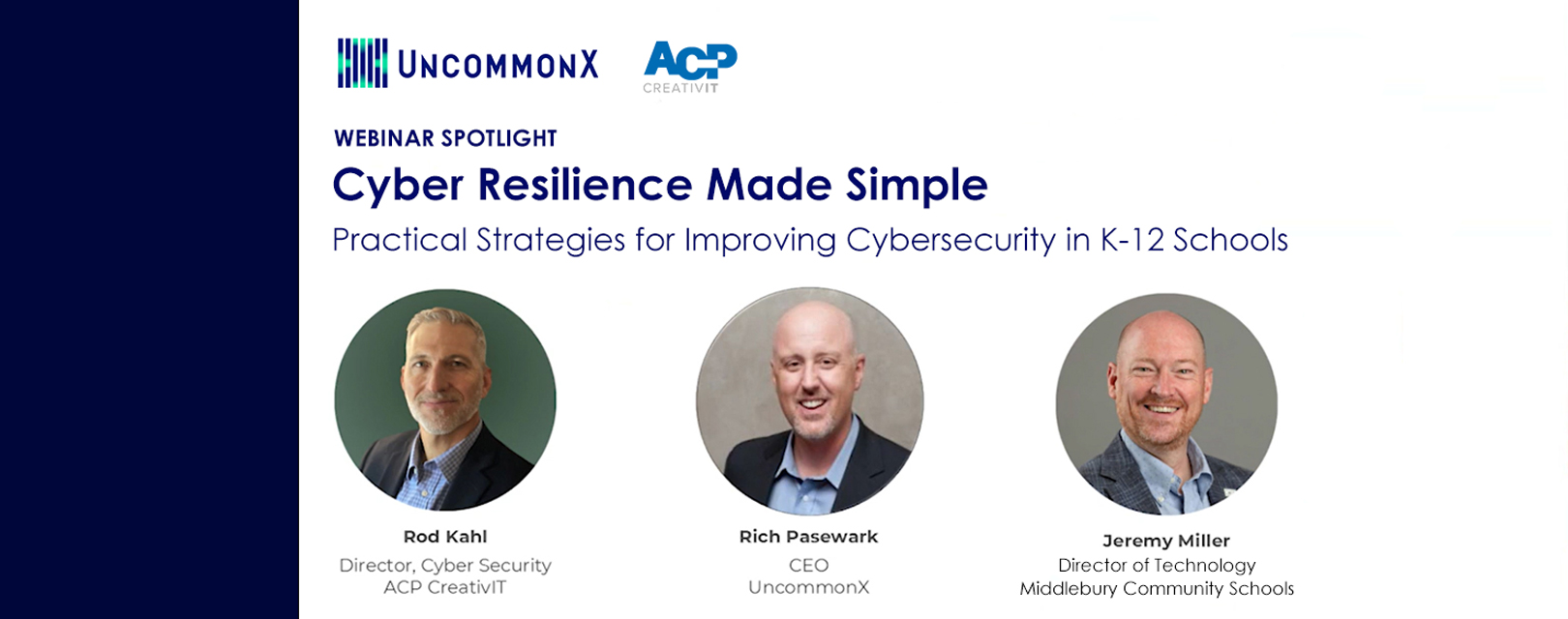A Case for 24/7 SOCs in K-12 Schools
With summer break on the horizon, cyber threats are showing no signs of slowing down. In fact, several districts are using the final months of the...
Experiencing an active breach? Call us immediately at 1-866-405-9156 UncommonX has experienced ZERO reportable breaches.
4 min read
 Rich Pasewark - CEO, Board Director
:
May 20, 2024 10:44:13 AM
Rich Pasewark - CEO, Board Director
:
May 20, 2024 10:44:13 AM

Safeguarding sensitive information is paramount—especially in educational environments where data security impacts not just staff and administration, but importantly, students. Multi-factor authentication (MFA) stands out as an essential security measure for K-12 schools, offering a robust defense against the increasing incidents of cyber threats and data breaches.
However, as our recent webinar Practical Strategies for Improving School Cyber Resilience revealed, implementing MFA can also present a behavior change that some students, staff, and faculty are resistant to embrace. That said, IT leaders argue MFA should no longer be optional. And the experts from our webinar agree. Here is a snippet of that conversation.
This blog post explores why implementing MFA is an effective step for K-12 school IT teams to take when bolstering their data security and cyber resiliency. It also details the advantages and challenges associated with doing so.
What is Multi-Factor Authentication?
Multi-factor authentication (MFA) is a security system that requires more than one method of authentication from independent categories of credentials to verify the user's identity for a login or other transaction. Unlike traditional security processes that rely on only one factor—typically a password—MFA requires additional verification from at least one other source. This can include something you know (a password or PIN), something you have (a smartphone or security token), or something you are (biometrics such as fingerprints or facial recognition).
Why is MFA Important for K-12 Schools?
With schools increasingly incorporating technology into their daily operations, from online learning platforms to cloud-based attendance and grading systems, the need for robust security measures has never been greater. MFA adds an essential layer of protection, making it significantly harder for unauthorized parties to access sensitive data even if they have compromised one security layer. For instance, even if a password is stolen, the presence of MFA would require the attacker to also have access to a second factor, dramatically reducing the likelihood of a successful breach.
"Most insurance companies [in our state] have now required multi-factor authentication on end users. So we have instituted multi-factor authentication to give a different level and layer of security."
- Jeremy Miller, Director of Technology, Middlebury Community Schools
Cybersecurity Risks Prevented by MFA
The adoption of multi-factor authentication significantly mitigates several cybersecurity risks. Here are key threats that MFA helps prevent in K-12 school settings:

Phishing is a common technique used to trick users into providing sensitive information, such as usernames and passwords. MFA requires an additional verification factor, which means that even if an attacker obtains the password through phishing, they cannot gain access without the second factor.

Attackers who intercept communications between the user and the system can steal usernames and passwords, but MFA can stop them from accessing the system without the additional verification factor, even if they capture the user's password.

In ATO attacks, attackers gain control of a user's account and can conduct malicious activities. MFA adds a layer of security that helps prevent unauthorized users from gaining full control, even if they have the initial login credentials.

These attacks involve guessing passwords until the correct one is found. MFA blocks access after the initial login step, requiring further authentication that a brute force attack typically cannot simulate.
In this type of attack, stolen account credentials from one breach are used to gain access to accounts on other platforms. MFA protects against this by ensuring that access requires more than just the stolen credentials.

By securing accounts with multiple forms of authentication, MFA reduces the risk of identity theft, where attackers use stolen personal information for fraudulent purposes.
Setting Up MFA in Schools
Implementing MFA in a K-12 environment involves the following steps:
By implementing MFA, IT teams can achieve greater peace of mind and turn their attention to maintaining a safe and secure educational environment. The implementation of MFA brings several advantages:
 |
Enhanced Security: Reduces the risk of unauthorized access even if a password is compromised. |
 |
Compliance with Regulations: Helps schools comply with educational privacy laws and regulations, such as FERPA, by securing access to student records. |
 |
Reduced Risk of Data Breaches: Decreases the likelihood and potential impact of a data breach, protecting both school reputation and the privacy of students. |
Challenges to Implementing MFA
While the benefits are clear, schools may face challenges when implementing MFA:
However, the advantages far outway the challenges when it comes to fortifying the protection and security of sensitive information within schools.
Schedule Your Free 30 Minute Consult
Book your free 30 minute block of time with one of our cybersecurity experts. We'll sit with you and your team to go through a simple cyber assessment rubric so you'll know your maturity score against the NIST framework, and where you stand with each component.
Taking the First Step
The adoption of multi-factor authentication is a critical step in fortifying the cybersecurity posture of K-12 schools. By understanding and navigating the complexities of MFA, schools can enhance their ability to protect sensitive data and provide a safer educational environment.
At UncommonX, one of our most frequent recommendations to clients is the implementation of comprehensive control coverage assessments through our platform. It not only identifies discrepancies, it also actively manages them to ensure a robust defense against potential vulnerabilities.
This capability is reflected in the Cybersecurity Framework (CSF) scoring integrated within our system, which provides a detailed and actionable snapshot of your school’s cybersecurity posture. By leveraging these solutions, school districts can achieve a higher level of cyber resilience, fostering an environment where security measures are not only implemented but continuously monitored and improved. To learn more about internal best practices for building better cyber resilience, check out our webinar here or reach out to hello@uncommonx.com.

With summer break on the horizon, cyber threats are showing no signs of slowing down. In fact, several districts are using the final months of the...

The cybersecurity landscape in K-12 schools has reached a pivotal point. Despite growing threats, many schools find themselves underprepared, with a...

As the 2023/24 school year draws to a close, many districts are taking stock of the surge in cyber attacks that targeted educational institutions...